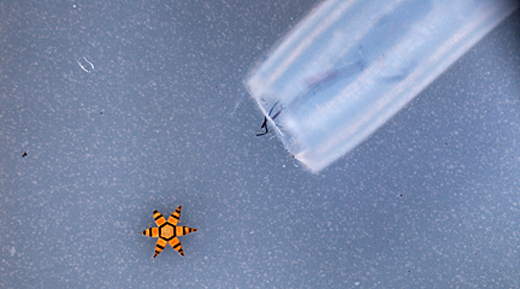Mu-Gripper Microbots, A Step Towards Non-invasive Surgical Procedures

Tissue and cell biopsies are important procedures used to investigate cancer, infectious diseases and few disorders. It involves removing a small portion of suspicious cells and tissues from the affected areas and conducting necessary tests. Traditional biopsy procedures involve use of specially designed forceps, and many a times when tissue samples have to be obtained from hard to reach areas, invasive procedures have to be adopted.
The microbots developed by researchers at Johns Hopkins University enable the doctors to perform minimally invasive biopsies. These microbots known as mu-grippers (µ-grippers) can easily access narrow conduits and other hard to reach areas and grab tissue samples. These microbots are tiny wireless devices that can be autonomously activated by body heat.
The mu-grippers are low cost devices fabricated using photolithography. They are star shaped tools made of magnetic material. Their finger like projections are made of material that normally curl inwards, and a polymer resin coat makes the joints rigid preventing these projections from closing in. These microbots were tested by collecting cells form the colon and esophagus of pig. A pig is opted as a test subject here as its intestinal tract is similar to that of humans. In order to conduct biopsies, a swarm of these mu-grippers are inserted into the live animal using an endoscopy tool through mouth and stomach and release in its bile duct in order to obtain tissue samples.
The mu-grippers are kept on ice prior to insertion. Once inside, the warmth of the body will soften the polymer coat making the projections to curl inwards and grasp some tissue. Then a magnetic probe is inserted to retrieve these microbots with tissue samples in it. By using a large number of mu-grippers, a large sample size of tissues can be obtained easily which will help draw accurate inferences.
Further research is being conducted to improve the deployment techniques and to explore ways to use it in human patients. The research team has applied for grants to fund its further studies. Once the studies are conducted and cleared for usage on humans, these mu-grippers will become an indispensable tool in diagnostics and biomedical research.
Source: Johns Hopkins University


